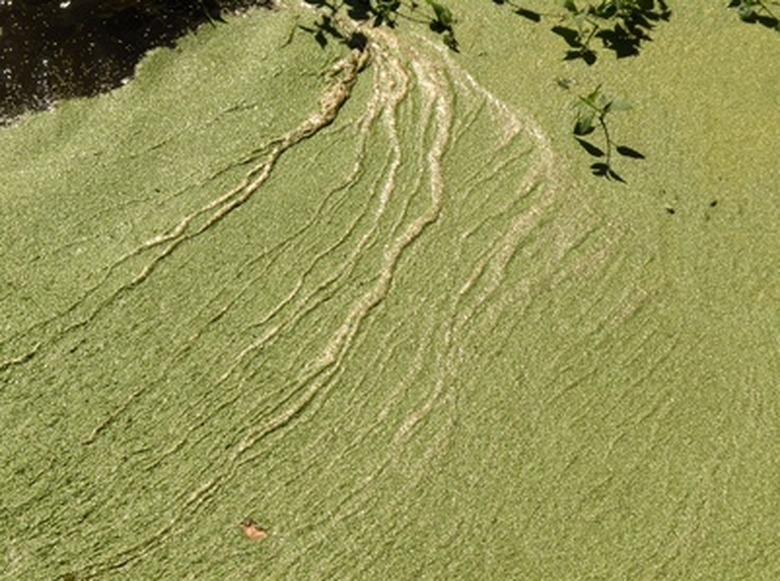How To Use Copper Sulfate
Things Needed
- Copper (II) sulfate
- PH testing kit (available at many pool supply stores)
- Boat
- Cloth sack
- Rope
Tip
Never just throw or sprinkle crystals of copper sulfate into the pond; they'll sink to the bottom without achieving the desired effect.
Warning
Copper sulfate is an eye and skin irritant and may be toxic if ingested. Never leave copper sulfate crystals within reach of children. Copper sulfate is potentially toxic to pond fish. If in doubt, err on the side of caution. It's better to underdose your pond than apply too much and unintentionally kill your fish.
Copper (II) sulfate is a potent algaecide and fungicide often used to kill algae in ponds. It should not be used to treat algae blooms, however, because the sudden die-off could leave oxygen-poor conditions in its wake. Copper sulfate also is poisonous to some invertebrates and potentially toxic to fish if misused, so it's important to follow proper precautions when applying this chemical to your pond. The chemical is available from many home improvement and pool supply stores, usually in crystal form.
Step 1
Test the total alkalinity of your pond, using your pH kit; follow the manufacturer's instructions. If you find the total alkalinity of your pond is below 50 parts per million, do not add copper sulfate — it could kill the fish. If you don't keep fish in your pond, you can apply copper sulfate safely as long as the total alkalinity is above 20 parts per million.
- Copper (II) sulfate is a potent algaecide and fungicide often used to kill algae in ponds.
- If you don't keep fish in your pond, you can apply copper sulfate safely as long as the total alkalinity is above 20 parts per million.
Step 2
Determine how much copper sulfate you need. A table can indicate how much to use per acre-foot, depending on the total alkalinity of your pond.
Step 3
Determine the volume of your pond in acre-feet. To do so, take the total surface area of the pond in acres, then divide by the average depth of the pond. If you don't know the average depth of the pond, find it by measuring the depth at multiple locations and averaging your measurements.
Step 4
Weigh out the amount of copper sulfate you need and place it in a cloth bag. Take your boat out into the pond and trail the cloth bag behind the boat on a rope. The copper sulfate in the bag will dissolve as you criss-cross the pond. You can also spray the pond instead. Either way, be sure to distribute the copper sulfate as evenly as possible; it's important to avoid creating areas of high and low concentration because the high concentrations will be lethal to fish, while the low concentrations may fail to kill the algae.
- Determine how much copper sulfate you need.
- If you don't know the average depth of the pond, find it by measuring the depth at multiple locations and averaging your measurements.
Step 5
Monitor the pond over the ensuing days. The algae should die within three to five days after treatment.
